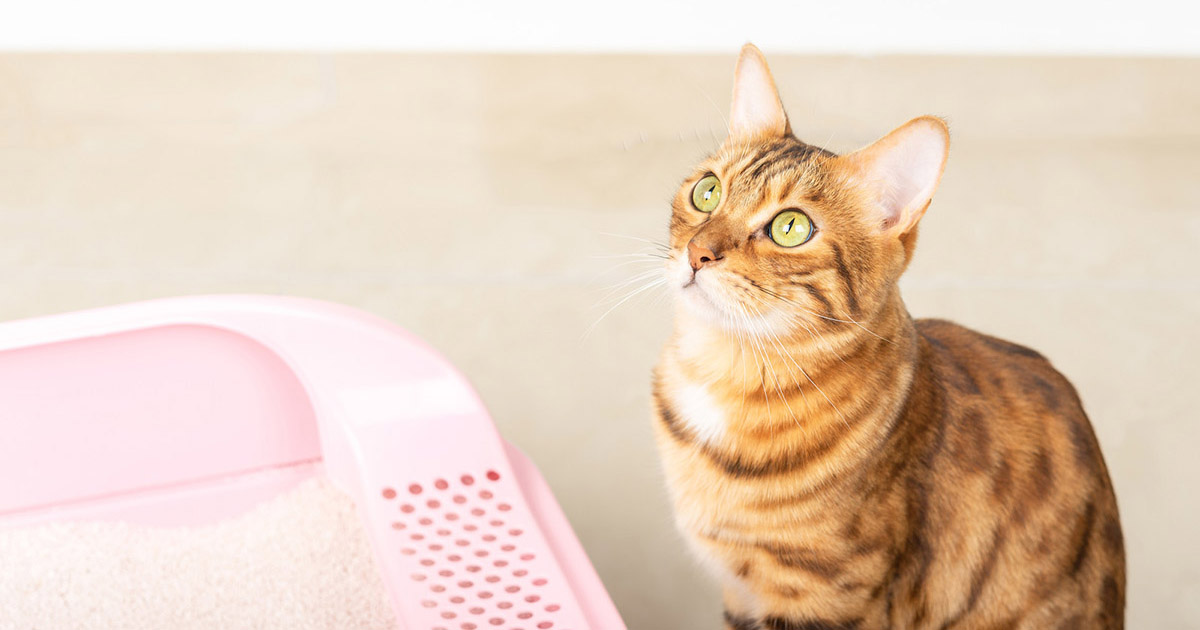Avoid Clogs and Damage: Never Flush Cat Poop Down Your Toilet - Expert Recommendations
Avoid Clogs and Damage: Never Flush Cat Poop Down Your Toilet - Expert Recommendations
Blog Article
Almost everyone may have their personal idea about How to Dispose of Cat Poop and Litter Without Plastic Bags.

Intro
As feline owners, it's important to bear in mind how we dispose of our feline good friends' waste. While it may seem hassle-free to flush cat poop down the commode, this method can have damaging consequences for both the setting and human wellness.
Ecological Impact
Purging cat poop presents hazardous virus and parasites right into the water, posing a considerable risk to aquatic communities. These contaminants can negatively affect aquatic life and compromise water top quality.
Wellness Risks
In addition to environmental issues, purging pet cat waste can additionally pose health dangers to people. Feline feces may contain Toxoplasma gondii, a bloodsucker that can create toxoplasmosis-- a possibly severe health problem, particularly for expecting women and individuals with weakened body immune systems.
Alternatives to Flushing
The good news is, there are much safer and a lot more accountable methods to throw away feline poop. Consider the following alternatives:
1. Scoop and Dispose in Trash
The most common method of taking care of pet cat poop is to scoop it into an eco-friendly bag and throw it in the trash. Make certain to utilize a specialized clutter inside story and dispose of the waste without delay.
2. Use Biodegradable Litter
Opt for naturally degradable pet cat trash made from materials such as corn or wheat. These clutters are eco-friendly and can be safely gotten rid of in the garbage.
3. Bury in the Yard
If you have a lawn, consider burying feline waste in a marked area far from vegetable yards and water resources. Be sure to dig deep sufficient to avoid contamination of groundwater.
4. Mount a Pet Waste Disposal System
Invest in a pet waste disposal system particularly designed for feline waste. These systems use enzymes to break down the waste, lowering smell and ecological impact.
Verdict
Responsible pet dog ownership extends past giving food and shelter-- it likewise involves proper waste administration. By refraining from purging pet cat poop down the toilet and going with different disposal methods, we can lessen our ecological footprint and safeguard human health.
Why You Should NEVER Flush Cat Poop (and/or Litter) Down Your Toilet
The Problem with Litter
The main function of litter is to solidify and adhere to your cat’s waste. While this makes litter excellent for collecting cat poop and urine, it’s also the exact property that makes it a nightmare when flushed down the toilet.
Cat litter can and will clog pipes. There is non-clumping litter, but it’s still quite heavy and can build up in pipes. This is true even of supposed “flushable litter.”
The problems only compound when the litter is already clumped into cat waste. Toilet paper is among the more flushable things, and even too much of that will clog a toilet.
The Problem with Cat Poop
Sewers and septic systems are designed with human waste in mind. The microbes that help break down human waste don’t work on cat waste. Additionally, cat poop plays host to the parasite Toxoplasma gondii.
When flushed, this parasite can enter the environment in places it was never meant to, posing a risk to pregnant women, their unborn children, and other people with compromised immune systems. While it might not seem possible, flushing cat poop can indeed introduce this parasite to the public water supply.
These reasons are why, even if you’ve trained your cat to go on the toilet and flush, which is possible, it’s still not a good idea. Also, pregnant women and the immunocompromised shouldn’t change litter, either.
How to Handle Litter
The best way to handle litter is to simply put it in a plastic bag and place it in the trash. Avoiding environmental risks and possible plumbing damage is worth the extra effort.
You can also invest in devices that seal away your cat’s waste in a separate compartment, so you don’t have to change the litter nearly as often. They’re also safer for pet owners because they limit the possibility of Toxoplasma gondii exposure.
Disposing of litter the old-fashioned way will ensure you won’t have to worry about any issues that flushing the waste can potentially cause.
Take Care of Clogged Pipes with Stephens Plumbing, Heating & Air Conditioning
The reasons you should never flush cat poop down your toilet are numerous, but sometimes the inevitable happens despite your best efforts.
Stephens Plumbing, Heating & Air Conditioning is ready to help if you’re experiencing litter-blocked plumbing. Whether you need us in an emergency or want to schedule regular maintenance, we’re here for you.
https://www.stephensplumbing.net/bathroom-plumbing/never-flush-cat-poop-down-your-toilet/

As an enthusiastic reader about How to Dispose of Cat Poop and Litter Without Plastic Bags, I was thinking sharing that excerpt was sensible. Do you know somebody who is interested in the niche? Be sure promote it. Thanks a lot for going through it.
Get Offer Report this page